Nothing beats a good outdoor adventure. Whether it’s camping, hiking, or just a weekend spent sleeping in a hammock under the starry night sky, it’s definitely something that everyone should experience at least once in their lifetime. However, as much fun as it can be, certain weather conditions can quickly damper the experience. Nobody wants to wake up to a wet and soggy hammock after a night of heavy rain. That’s why a good hammock rain cover is an essential piece of gear for any outdoor enthusiast.
What is a hammock rain cover?

As the name suggests, a hammock rain cover is simply a waterproof tarp that can be used to protect you and your gear from wind and rain. These rain covers are designed to be suspended above the hammock and provide a dry and weatherproof shelter for camping or just lounging outdoors.
Why do you need a rain cover for your hammock?
There are several reasons why you need a rain cover for your hammock. First and foremost, it keeps you dry and protected from the elements. It also helps keep your gear dry and in good condition. In addition to rain protection, some hammock rain covers have a built-in bug net to keep pesky insects at bay.
How does a hammock rain cover work?
A hammock rain cover provides an overhead shelter to protect you and your gear from the elements. It is usually attached to trees or posts using cords, straps, or ropes and suspended above the hammock. The cover is designed to be taut so that rainwater slides off the sides and doesn’t accumulate on top.
How to choose the perfect hammock rain cover?
Hammock rain cover materials
The material used in constructing the hammock rain cover is essential when choosing your rain cover. You want something waterproof, lightweight, and durable. Most hammock rain covers are made of either polyester or ripstop nylon. Polyester rain covers are slightly heavier but more durable, while ripstop nylon rain covers are lighter and more affordable.
Size and coverage
Another crucial factor to consider when choosing a hammock rain cover is the size and coverage. Rain covers come in different sizes and shapes, so it’s important to choose one that fits your hammock perfectly. A rain cover that is too small won’t provide enough coverage, while a rain cover that is too big will be cumbersome and difficult to set up.
Durability and weight
When choosing a hammock rain cover, you want something that is both durable and lightweight. A durable rain cover will last longer and provide better protection, while a lightweight one is easier to carry around. Look for a rain cover made of high-quality ripstop nylon or polyester; these materials are lightweight and highly durable.
Top 5 hammock rain covers
Profly Rain Tarp
The Profly Rain Tarp is a lightweight, versatile rain cover perfect for hammock camping and backpacking. Made of durable ripstop nylon, the Profly Rain Tarp can withstand harsh weather conditions and keep you dry and protected. It also has a ridgeline for easy setup and provides ample coverage for a single hammock.
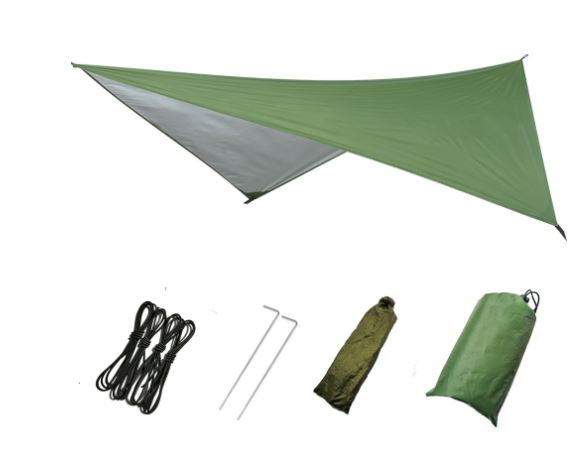
Big Hammock Rain Fly
The Big Hammock Rain Fly is another excellent hammock camping and backpacking option. Made of high-quality ripstop nylon, this rain fly is incredibly lightweight and easy to set up. It also provides excellent coverage and comes with everything you need to set it up, including stakes, ropes, and tensioners.
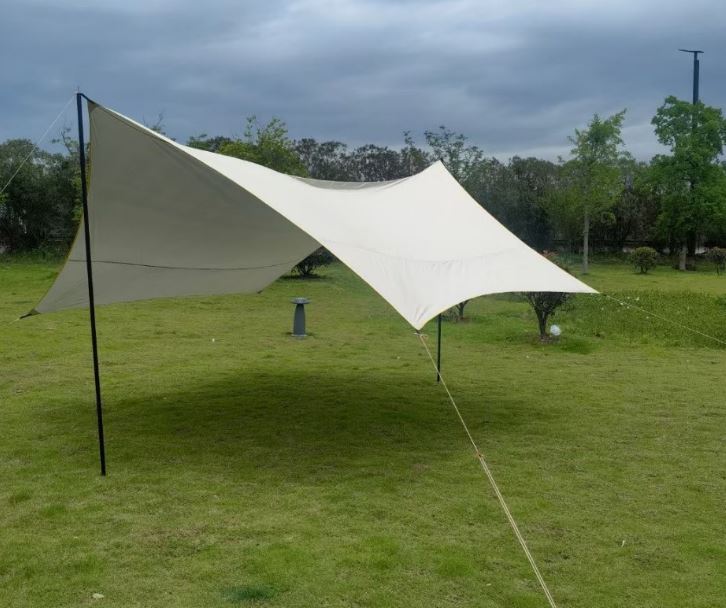
Leisure Hammock Rain Fly
The Hammock Rain Fly is a high-quality, durable rain cover perfect for hammock camping and backpacking. Made of ripstop nylon, it’s both lightweight and incredibly durable. It also offers excellent coverage and comes with everything you need to set it up, including guy lines, stakes, and a stuff sack.
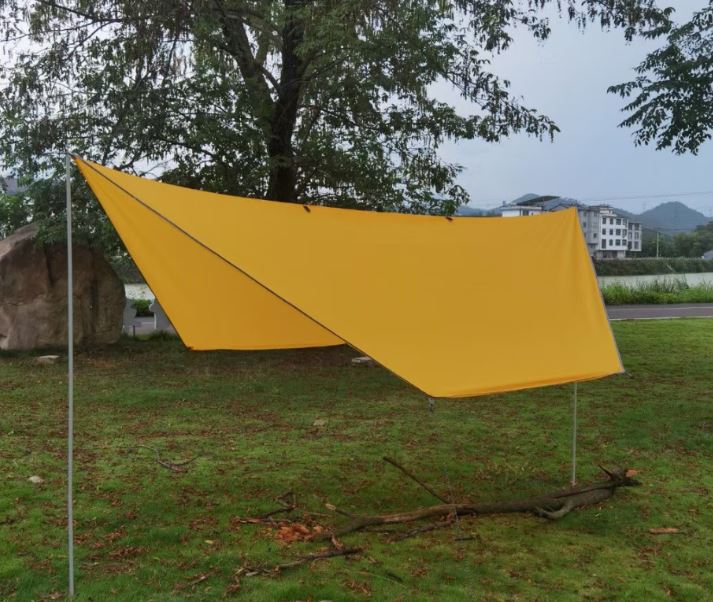
Other Design Hammock Rain Covers
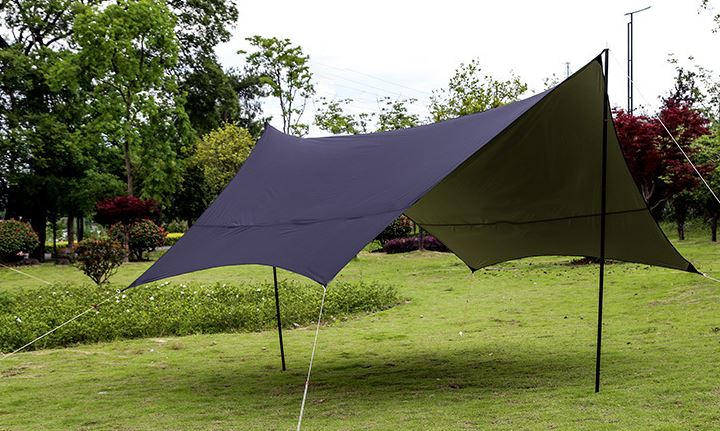
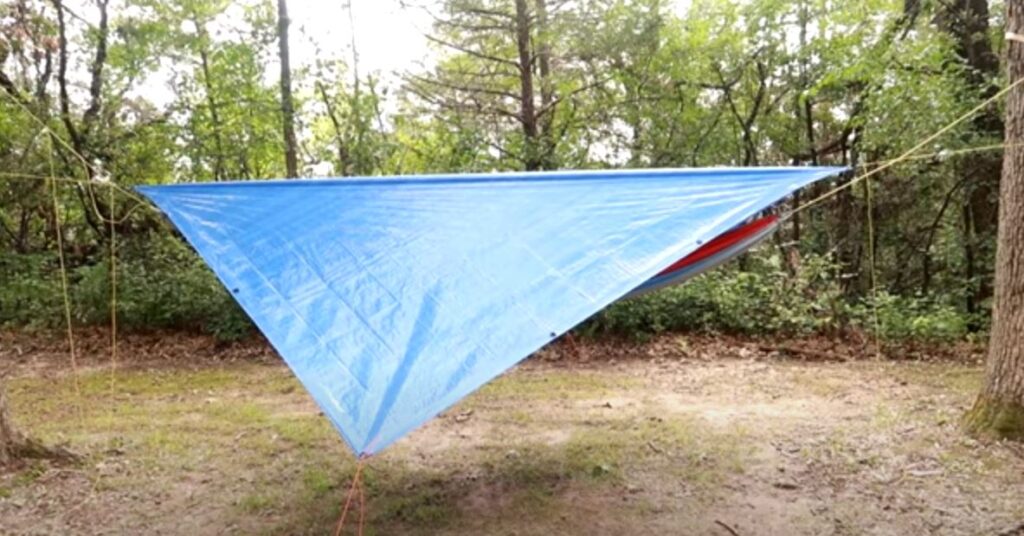
Choosing the Right Tarp for Hammock Camping: Key Factors to Consider
When it comes to hammock camping, choosing the right tarp is crucial to stay dry, protected, and comfortable throughout your outdoor adventure. There are several key factors to consider when selecting a hammock tarp, including fabric, durability, size, ease of setup, and warranty. Look for ripstop nylon material, which is durable and resistant to tears, and consider a polyurethane coating for added waterproofing. The tarp should be large enough to cover your entire hammock, with enough space for a mosquito net or rainfly if needed. Additionally, make sure that the tarp has strong attachment points and comes with enough rope or webbing for a secure setup. Personal preferences should also consider whether you prefer a lightweight and portable tarp for backpacking or a larger footprint for car camping with two hammocks. Ultimately, choosing a high-quality tarp with a lifetime warranty and a high rating from fellow campers is highly recommended in case of any defects or issues that might arise within 30 days of purchase.
How to set up a hammock rain cover?
A step-by-step guide to setting up a hammock rain cover
Setting up a hammock rain cover can initially seem daunting, but it’s a relatively straightforward process. Here’s a step-by-step guide to help you set up your hammock rain cover:
- Choose a flat and elevated spot to set up your hammock.
- Attach the suspension system to the trees or posts.
- Hang your hammock using the suspension system.
- Attach the rain cover to the suspension system using ropes or cords.
- Tighten the rain cover to make it taut and ensure rainwater slides off the sides.
- Adjust the height of the rain cover to provide adequate coverage.
Common mistakes to avoid when setting up a hammock rain cover
While setting up a hammock rain cover is relatively simple, there are a few mistakes that you should avoid:
- Not choosing an elevated spot to set up your hammock. This can lead to water pooling underneath your hammock.
- Not tightening the rain cover leads to water accumulation on top of the cover.
- Not adjusting the height of the rain cover to provide adequate coverage.
Caring for your hammock rain cover
How to clean a hammock rain cover?
Regular cleaning is essential to keep your hammock rain cover in good condition. To clean your rain cover, gently wipe it with soapy water using a soft cloth or sponge. Rinse it thoroughly with water and hang it to dry.
How to store a hammock rain cover?
When not in use, store your hammock rain cover in a dry, cool, and dark place to prevent damage from sunlight and moisture. You can fold it neatly and store it in a stuff sack for protection.
In conclusion, having a good hammock rain cover is essential for any outdoor enthusiast. It keeps you and your gear dry and protected from the elements, making your outdoor adventure much more enjoyable. When choosing a hammock rain cover, consider the materials used, size and coverage, durability and weight, and ease of setup and storage. With this guide and the top five hammock rain cover recommendations, you will surely find the perfect rain cover for your next adventure.

